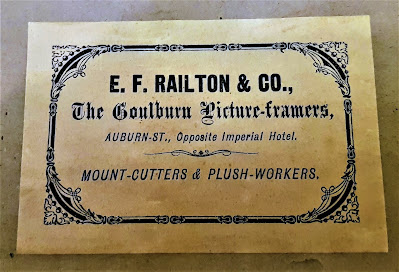Do you know who I am?
by Leslie Bush
Over ten years ago, Tony Porter owner of Coronation Collectables at Gunning, now located at Grenfell was given a photograph of a stunning young lady that the current owners could not identify.
Tony was at the time, the resident Gunning writer for the local newspapers and posted an article about the picture, but sadly she still is unknown. The Donors did not know her identity, only that she was supposedly a local and their names and where they lived in Gunning have also been forgotten now.
The photo is an
Opalotype.
 |
| Unidentified Young Lady - Opalotype Photograph |
She is wearing a beautiful dress with lots of soft blousy frills on the neckline; maybe she was a Debutante making her first foray into society, or a young bridesmaid at her sister’s wedding, or was she attending a ball? The portrait invokes such romanticism of a bygone era.
 |
| Item written by Tony Porter for the Goulburn Post |
Opalotypes or Milk-glass positive
The basic Opalotype, or Opaltype technique, involving wet collodion and silver gelatin, was patented in 1857 by Glover and Bold of Liverpool. Opalotypes exploited two basic techniques, using either the transfer of a carbon print onto glass, or the exposure of light-sensitive emulsion on the glass surface to the negative. Opalotypes in Australia date from 1882, and were prominent from 1890–1900. Opalotype photography, never common, was practiced in various forms until it waned and disappeared in the 1930s. "Milk glass positive" is another alternative term for an opalotype. (Wikipedia)
Opalotypes were printed on sheets of opaque, translucent white glass, early opalotypes were sometimes hand-tinted with colours to enhance their effect. The effect of opalotype has been compared "to watercolour or even pastel in its softer colouring and tender mood." "Opalotype portraits" for beauty and delicacy of detail, are equal to ivory miniatures."
They aren't made in camera, but in a darkroom from a conventional negative. Multiple prints are therefore no problem. Rarer than Ambrotypes, Opalotypes are very often hand coloured. Opalotypes are created using a four-colour carbon and mono-carbons process.
 |
| The Goulburn Picture-framers |
E. F. Railton (Emma Fanny) was the wife of Lancelot
Railton, a Picture Framer in Auburn Street, Goulburn who is mentioned in
various newspaper advertisements, gazettes and other records.
We know it had to have been done before December 1894 as this is when Emma died and Lancelot went bankrupt.
The photo is set into deep red velvet material with a gold painted frame reminiscent of a shadow box.
If you think you know who this lovely young lady is, or know those kind people who donated the portrait, please contact us at gunninghistory@gmail.com
Photograph and Newspaper article courtesy of Tony Porter from;
Coronation Collectables 107 Main Street, Grenfell, NSW, 2810
Phone: 02 – 63846218 - Email: coronationcoll@optusnet.com.au
Comments
Post a Comment